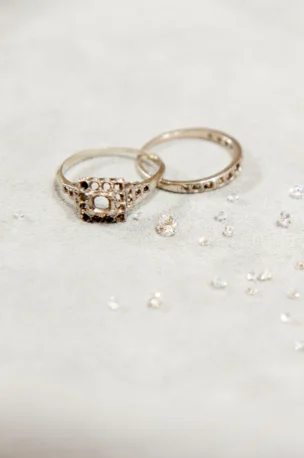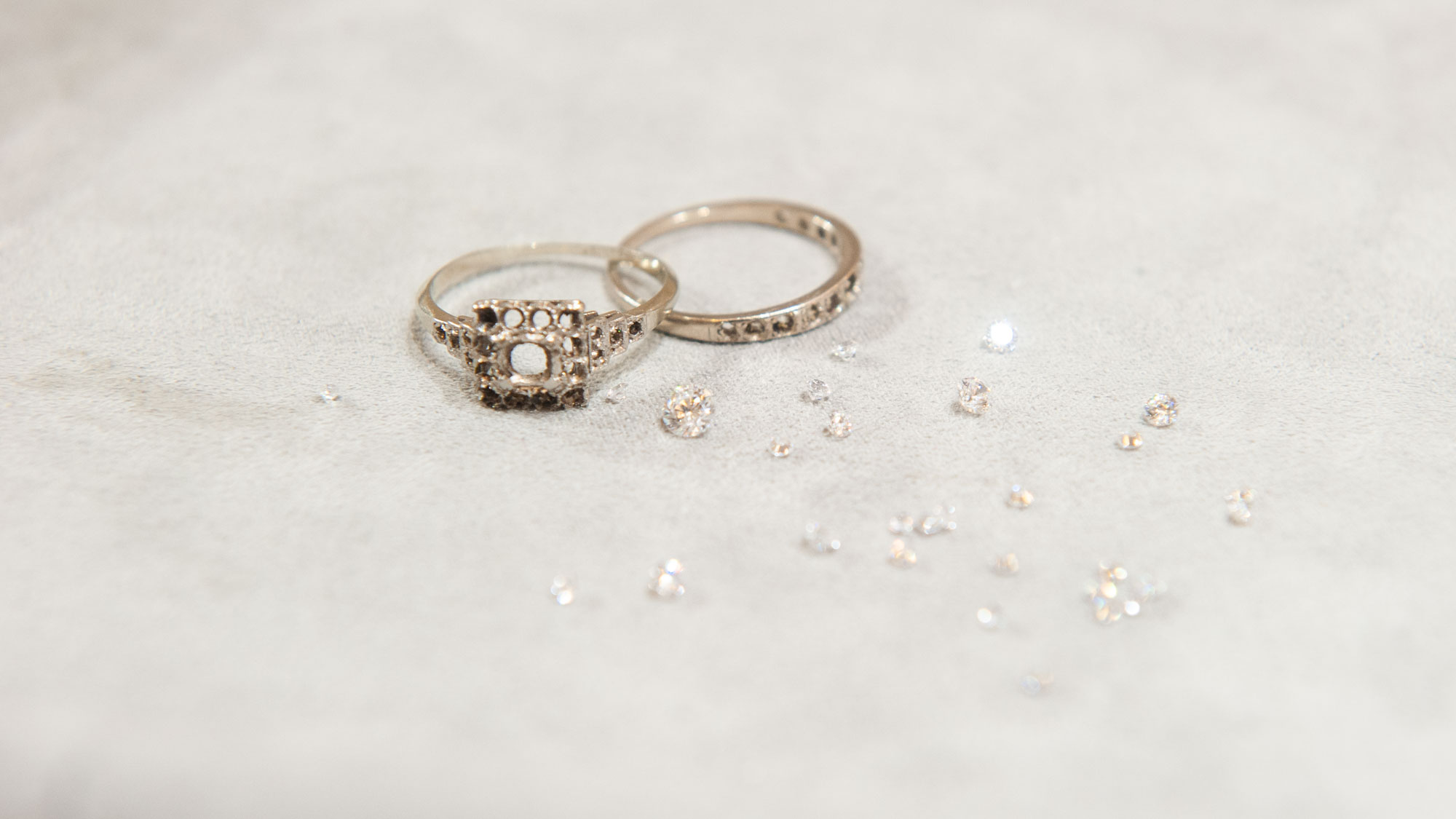Jewellery holds a special place in our hearts, often carrying sentimental value and precious memories. However, styles change, and what was once a beloved piece can become outdated or worn. This article delves into the fascinating world of jewellery remodelling and restoration, offering insights into the creative possibilities, detailed processes, sustainable benefits, emotional value, and diverse ideas available to transform your treasured pieces into contemporary masterpieces.
Whether you have inherited a family heirloom or possess jewellery that no longer suits your taste, this guide will provide you with valuable information on how to breathe new life into your old pieces. From understanding the step-by-step process to exploring various remodelling ideas, you’ll discover how to create unique, meaningful jewellery that reflects your personal style and preserves cherished memories.
Creative Possibilities in Remodelling
Jewellery remodelling offers a myriad of creative possibilities, allowing you to transform old or unworn pieces into stunning new designs. One of the most exciting aspects of remodelling is the ability to repurpose existing materials and gemstones into something entirely new and unique.
Transformation Examples
Jewellery remodelling opens up a world of creative possibilities, allowing you to breathe new life into cherished pieces. By exploring various transformation concepts, you can find the perfect way to modernise your jewellery while preserving its sentimental value. Here are several groups of transformation ideas to consider:
Transforming Large, Ornate Pieces
Simplifying Complex Designs: Large, ornate pieces such as cocktail rings or statement necklaces can be simplified into more wearable, everyday items. For instance, a large ring can be broken down into smaller components to create a pair of elegant stud earrings and a minimalist band. This not only makes the jewellery more practical but also retains the beauty and value of the original gemstones and metals.
Example: Transforming a vintage brooch into multiple pieces, such as a pendant and matching earrings, can provide versatility while preserving the original aesthetic.
Combining Multiple Pieces
Creating Statement Pieces: Combining elements from multiple pieces of jewellery can result in a stunning statement piece. For example, merging diamonds from an engagement ring with gemstones from a family necklace can create a unique ring or pendant that tells a story and holds deep personal meaning.
Unified Designs: This approach is particularly useful for those with several smaller, less wearable items. By combining them into a single, cohesive design, you can create a bold new piece that stands out.
Example: Integrating stones from different rings into one elaborate cocktail ring or bangle, thus preserving the sentimental value of each original piece.
From 2 Rings to “3” Pendants



Here’s an example of what we’ve recently done for a customer who had 2 very old and worn out rings with multiple small diamonds with different sizes. She didn’t wanted something other than rings, so we agreed on the idea of creating a versatile 3 in 1 pendant for her. The great thing about this design is that the design is simple enough, but can still fit all of her diamonds in 1 piece. Best of all, the pendant can be worn in 3 different ways.
Check out our video on Instagram for more detailed explanation on how we did it!
Updating Outdated Styles
Modernising Vintage Jewellery: Vintage jewellery often has intricate designs that may feel outdated. Remodelling allows you to modernise these pieces while keeping their essence. For example, a traditional Victorian ring can be redesigned with a sleeker band and contemporary setting, making it more suitable for today’s fashion.
Example: Converting an antique cameo brooch into a modern pendant or ring, thereby making it more versatile and wearable.
Repairing and Repurposing Damaged Items
Reviving Broken Jewellery: Damaged or worn-out jewellery doesn’t have to be discarded. Skilled jewellers can repair and repurpose these pieces, turning them into new creations. A broken necklace, for example, can be transformed into a bracelet and a pair of earrings.
Example: A snapped bracelet can be redesigned into a pair of hoop earrings, making use of the remaining materials without losing the original charm.
Merging and Consolidating Gemstones
Cluster Designs: If you have several smaller gemstones from different pieces, consider creating a cluster design. This can involve grouping the stones together in a new setting, such as a cluster ring or pendant, which can provide a striking visual impact.
Example: Combining small diamonds from multiple rings to create a stunning halo setting around a central gemstone, enhancing its brilliance and making a bold statement.
Transforming Family Heirlooms
Honouring Heritage: Family heirlooms carry significant emotional weight. Remodelling allows you to honour this heritage while adapting the piece to fit modern styles. For instance, an inherited ring can be redesigned to suit the personal taste of the current wearer, ensuring it remains a cherished item for future generations.
Example: Reworking a grandmother’s wedding ring into a modern engagement ring for a new generation, incorporating elements of the original design to maintain its legacy.
Creating Multi-Functional Pieces
Versatile Designs: Remodelling can also focus on creating versatile jewellery pieces that can be worn in multiple ways. For example, a long necklace can be redesigned to also function as a wrap bracelet or a multi-layered choker, providing different styling options.
Example: A necklace with detachable pendants that can be worn individually as charms on a bracelet or earrings, offering flexibility and variety in wear.
Modern Designs
Remodelling allows you to take outdated designs and give them a modern twist. For instance, you might rework a traditional engagement ring into a contemporary design that aligns with current fashion trends. This approach ensures that your jewellery remains stylish and relevant, while still retaining the sentimental value of the original piece.
Detailed Process and Personalisation
The process of jewellery remodelling is an intricate journey that combines creativity, craftsmanship, and personalisation to transform old or unworn pieces into new treasures. Here’s a closer look at each step involved in this detailed process:
1. Initial Consultation
The remodelling journey begins with an initial consultation. This meeting is crucial as it sets the foundation for the entire project. During this session, you will discuss your ideas, preferences, and the specific pieces you wish to remodel. This is an opportunity to share the history and sentimental value of your jewellery, which can significantly influence the design process.
Discussing Ideas and Preferences: You can bring inspiration, such as photos, sketches, or even other jewellery pieces that you admire. This helps the jeweller understand your aesthetic preferences and style.
Assessing the Jewellery: The jeweller will examine the pieces to determine their condition and the potential for remodelling. This assessment includes checking the integrity of the metals and gemstones and identifying any repairs that might be needed.
2. Design Development
Once the initial consultation is complete, the design development phase begins. This stage involves translating your ideas and preferences into tangible design concepts.
Sketching and Visualisation: The jeweller will create preliminary sketches to visualise different design possibilities. These sketches are often shared with you for feedback and adjustments.
Computer-Aided Design (CAD): Advanced jewellers use CAD technology to create detailed, realistic renderings of the proposed designs. This allows you to see a 3D model of the piece, providing a clear picture of how the final jewellery will look.
Material Selection: During this phase, decisions about materials are made. This includes choosing the type of metal (e.g., gold, platinum) and selecting any additional gemstones that might be needed to complete the design.
3. Securing Materials
In some cases, additional materials may be required to bring the design to life. This could involve sourcing new gemstones or metals that complement the existing pieces.
Ethical Sourcing: Reputable jewellers ensure that any additional materials are ethically sourced. This includes conflict-free diamonds and responsibly mined metals.
Matching Gemstones: If the design requires new gemstones, the jeweller will source stones that match the quality and appearance of the existing gems to maintain a cohesive look.
4. Obtaining a Quote
Before the crafting begins, a detailed quote is provided. This quote outlines the costs associated with the remodelling project, including any additional materials, labour, and other expenses.
Transparent Pricing: A good jeweller will provide a transparent, itemised quote that explains each cost component. This helps avoid any surprises and ensures that you understand the financial investment involved.
Adjustments: If the initial quote exceeds your budget, there may be options to adjust the design or materials to reduce costs while still achieving a beautiful result.
5. Approval and Final Design
Once you approve the design and quote, the final design phase begins. This stage involves fine-tuning the details and preparing for the actual crafting of the jewellery.
Final Adjustments: Any last-minute changes or adjustments are made to the design. This could include altering the placement of gemstones, changing the metal finish, or adjusting the size of the piece.
Design Approval: You will give the final approval before the crafting begins, ensuring that you are completely satisfied with the proposed design.
6. Crafting the Jewellery
The crafting phase is where the design comes to life. Skilled artisans work meticulously to transform the design into a tangible piece of jewellery.
Handcrafting: The jewellery is crafted by hand, using traditional techniques combined with modern technology. This ensures high-quality craftsmanship and attention to detail.
Setting Gemstones: Gemstones are carefully set into the piece, ensuring they are secure and well-aligned. This step requires precision to enhance the beauty and durability of the jewellery.
Finishing Touches: The final touches include polishing the metal to a high shine, ensuring all settings are secure, and making any necessary adjustments for fit and comfort.
7. Presentation and Follow-Up
Once the jewellery is crafted, it is presented to you for review. This is a moment of excitement as you see the transformation from old to new.
Final Inspection: You will inspect the finished piece to ensure it meets your expectations. Any minor adjustments can be made at this stage.
Aftercare and Maintenance: A good jeweller will provide guidance on how to care for your newly remodelled jewellery to ensure it lasts for many years. This might include advice on cleaning, storage, and periodic maintenance.
Consultation
The process begins with an initial consultation, where you discuss your ideas, preferences, and the pieces you wish to remodel. This step is crucial as it helps the jeweller understand your needs and offers an opportunity to explore various design possibilities. During this consultation, you can also discuss any specific requirements, such as maintaining the integrity of certain gemstones or incorporating elements from multiple pieces.
Design Development
Once the initial ideas have been discussed, the jeweller will start developing design concepts. This typically involves sketching out various designs and using computer-aided drawings to create realistic visualisations of the final piece. These sketches allow you to see how the remodelling will look and provide an opportunity to make any necessary adjustments before the crafting begins.
Craftsmanship
The actual crafting of the jewellery is a meticulous process that requires skilled artisans to bring the design to life. Using traditional techniques combined with modern technology, these artisans carefully remodel the existing materials, ensuring that the final piece meets the highest standards of quality and craftsmanship. Throughout this process, you will be kept informed and may even have the chance to see your jewellery being transformed.
Sustainability and Cost-Effectiveness
Jewellery remodelling is not only a creative and personal endeavour but also an environmentally friendly and cost-effective choice.
Eco-Friendly Approach
By repurposing existing materials and gemstones, remodelling reduces the need for new resources and minimises the environmental impact. This sustainable approach is particularly appealing to those who are conscious of their environmental footprint and prefer to make eco-friendly choices.
Cost Savings
Remodelling can also be more affordable than purchasing new jewellery. Since you are reusing existing materials, the costs associated with sourcing new gemstones and metals are significantly reduced. This makes remodelling an attractive option for those looking to refresh their jewellery collection without breaking the bank.
Emotional and Sentimental Value
One of the most compelling reasons to remodel jewellery is the emotional and sentimental value that it can preserve and enhance.
Preserving Memories
Jewellery often carries significant sentimental value, representing important life events, family heritage, or personal milestones. Remodelling allows you to retain these precious memories while updating the design to suit your current style. For example, transforming an old family ring into a new piece that you can wear every day keeps the memories alive and close to your heart.
Personal Connection
Remodelling provides a unique opportunity to create jewellery that is deeply personal and meaningful. By incorporating elements from different pieces, you can create a new design that tells a story and maintains a connection to the past. This personalised approach ensures that your jewellery is not only beautiful but also holds special significance.
Diverse Remodelling Ideas
The possibilities for remodelling jewellery are virtually endless, allowing you to explore a wide range of creative ideas.
Combining Elements
One popular approach is to combine gemstones from multiple pieces into a single new design. For example, you might merge the diamonds from an old engagement ring with gemstones from a family necklace to create a stunning new ring. This technique allows you to preserve the sentimental value of each piece while creating something entirely new and unique.
Transforming Multiple Pieces
Another option is to transform multiple outdated or broken pieces into a single, cohesive design. This could involve melting down old gold pieces to create a new ring or combining various gemstones into a statement necklace. This approach not only refreshes your jewellery collection but also ensures that no valuable materials go to waste.
Final Thoughts
Jewellery remodelling and restoration offer a wonderful way to breathe new life into old, unworn pieces. By exploring the creative possibilities, understanding the detailed process, and considering the sustainable and cost-effective benefits, you can transform your treasured jewellery into contemporary designs that reflect your personal style and preserve precious memories.
If you have jewellery that holds sentimental value but no longer suits your taste, consider remodelling as a way to create something new and meaningful. With the help of skilled artisans, you can turn your old pieces into timeless treasures that you will cherish for years to come.

